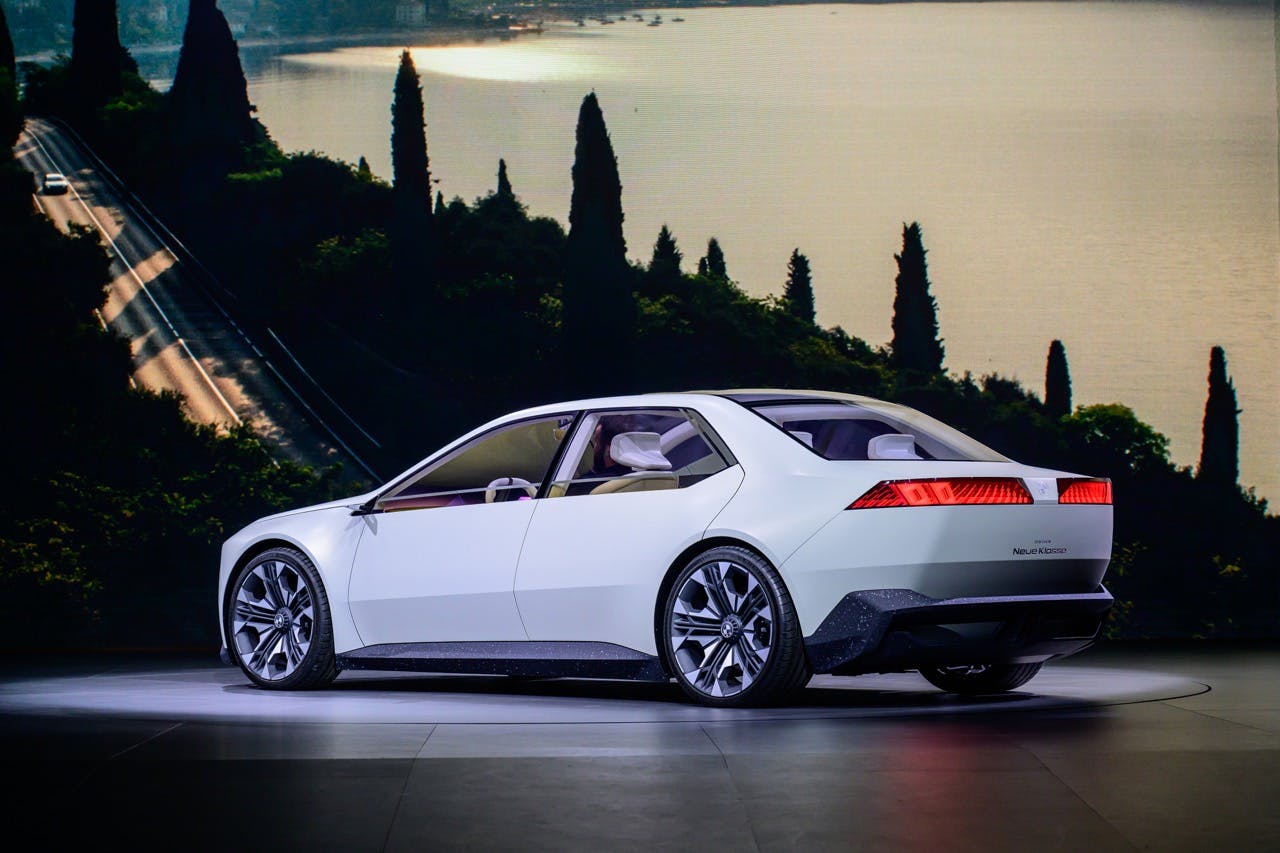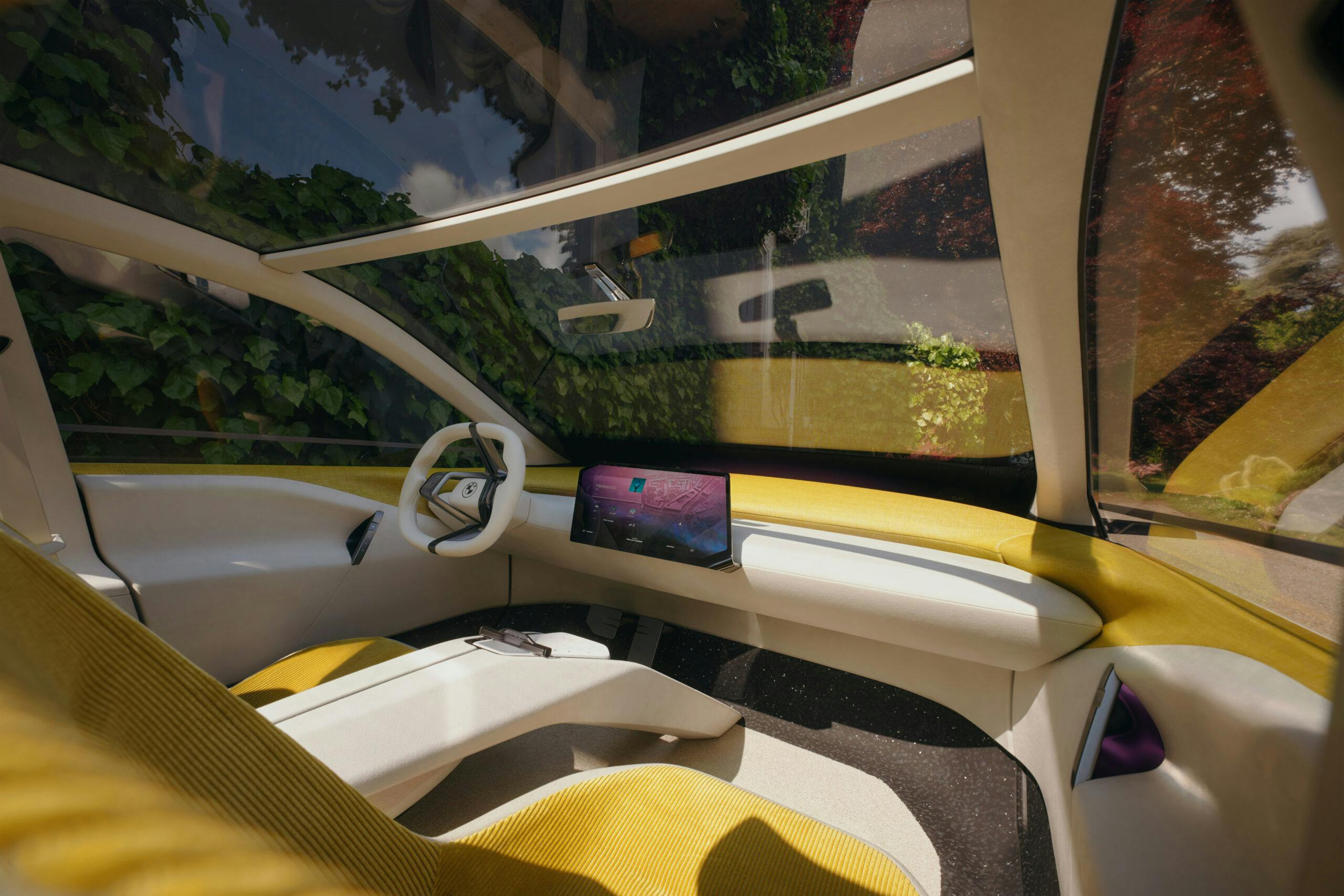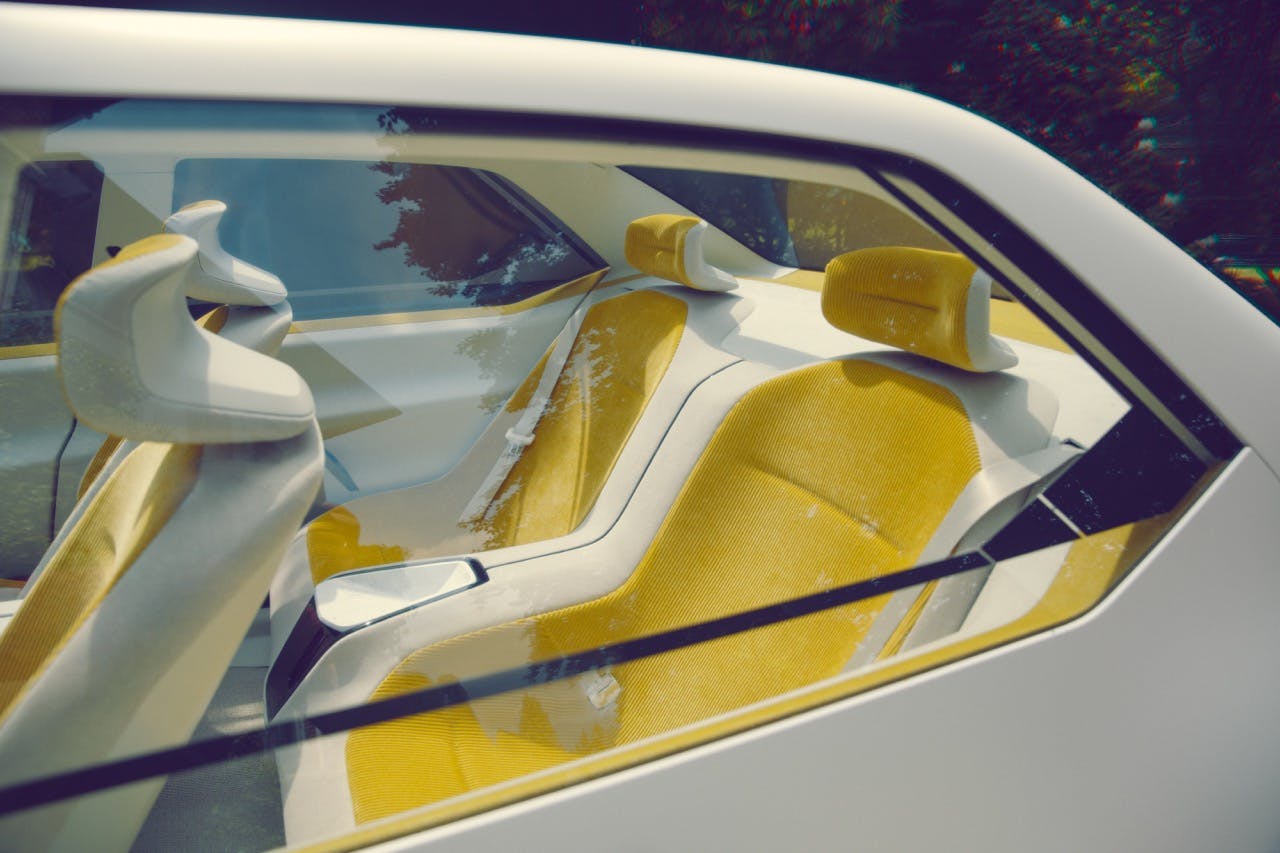Media | Articles
The Neue Klasse concept instills hope for BMW design
When it comes to BMW’s latest design exercise, the Neue Klasse concept that debuted last week in Munich, I can’t help but think of how some rules of design evolve and change. Or perhaps it’s our understanding of them. For instance, a quote: “Negative surfaces have no place in automobile design.” That’s what my professors used to tell me during the first year of my bachelor’s degree in Transportation Design. That was 2003, the same year BMW launched a positively controversial interplay of negative and positive surfaces for the E60-generation 5 Series sedan.
Under the direction of Chris Bangle, BMW’s designers were ripping to shreds the very same rulebook I was being taught to follow. As you can imagine, Bangle’s BMWs were a hot topic of discussion between us design students and our seasoned professors, and there seemed to be no middle ground. People either appreciated BMW for its courage or vehemently hated it for “ruining” the cars we grew up loving so much.
I admit I was closer to the latter camp, and it took me a few years to come around to cars like the E60-generation 5-Series mentioned above, or the E85 Z4 roadster. Twenty years on, these cars arguably look fresher and more modern than their current equivalents, and I revere them as genuine design landmarks. Much of my peers do, as well.
Even though many other BMWs from the “Bangle Era” haven’t aged nearly as well, there’s no denying the lasting impact he and his team’s work has had on the evolution of automobile design. But that was a long time ago, and I’m certainly not the only one who’s now failing to see any rhyme or reason behind the design choices that characterize the most recent crop of BMWs.
In fact, I’ve grown so accustomed to BMW’s repeated recent assaults on our retinas that I was ready to dismiss the latest Neue Klasse concept car as yet more proof that BMW has lost the plot. But that would have been unfair, because the more I look into this project, the more I realize that BMW may be onto something this time.
Marketplace
Buy and sell classics with confidence
As most BMW fans will undoubtedly know, the “Neue Klasse” moniker was used for a seminal run of sedans and coupes built between 1962 and 1972, which established BMW as a purveyor classy, sporting cars for decades to come. In the United States, the 2002 is the most celebrated product of this lineage. Much like the rest of the German automobile industry, BMW built its fortune through skillful and incremental refinement of the same winning formula. For decades, all the Germans had to do was give their customers—every few years—a bigger, faster, better iteration of what they already knew and loved. Automakers could charge customers a bit more each time and then laugh all the way to the bank.
However, those days are rapidly coming to an end. The shift to electric propulsion forces BMW (just like other brands) to rethink what it stands for as a company and revise its cars’ unique selling proposition. Thus the resurrection of the “Neue Klasse” moniker for its latest concept car: the start of a new, transformative era in the marque’s history.
In this context, the choice of a classic three-box sedan format is all the more remarkable, given that this body style is currently heading the dodo’s way. It’s but one more clue that, as I’m reliably informed, BMW designers took inspiration from beloved compact sedans like the 2002 and the E30-generation 3 Series while designing the Neue Klasse.
That’s particularly evident in the concept’s slim roof pillars and ample windows, which I really hope will remain so on the production model slated for 2025/6. The front end is once again slanted forward, echoing the distinctive “shark nose” of the 1970s Bimmers. But there’s much more to the Neue Klasse than simple nostalgia for the BMWs of yore. It is a pared-back, refreshingly minimalist design almost devoid of character lines. It’s so far removed from the clumsy, overstyled monsters currently populating BMW’s showrooms that it might as well have come entirely from another company.
The Neue Klasse may have a traditional sedan body style, but its striking proportions show that its designers understood how to exploit the packaging advantages of electric vehicles to the fullest. The large-diameter 21-inch wheels are pushed toward the outer corners of the car, stretching the wheelbase and minimizing front and rear overhangs. Designers love this because it gives the vehicle a planted, purposeful stance that visually suggests roadholding and stability. Moreover, it leaves plenty of room for the underfloor battery and creates a more spacious passenger compartment relative to the car’s exterior dimensions.
If the exterior of the Neue Klasse has a definite retro-futurist vibe, its interior design is anything but. Here, BMW’s designers shunned nostalgia to fully embrace a minimalist aesthetic and digital-centric approach that does away with almost all physical controls. The dashboard is nearly bare, save for a full-width display panel called Panoramic Vision and a trapezoidal central screen. As the Neue Klasse is built on a new, dedicated EV platform, the floor is completely flat, with just a floating center console separating the four seats. It all looks very slick, perhaps too much so. The yellow corduroy upholstery is a nice touch and gives the interior some warmth, but overall, the cabin still exudes a clinical vibe. And no matter how modern and cool your dentist’s studio looks, it will still be the last place you’d like to kick back and relax. Plenty of recent concept cars from other brands have successfully demonstrated that a slick and high-tech can be inviting, as well.
So, has BMW finally rediscovered its mojo? Maybe, but I’d say it’s too early to celebrate. After all, the Neue Klasse is still just a prototype, and although it is a promising sign of things to come, it still looks somewhat half-baked in its execution, especially the rear-end design. Still, I’d much rather drive around in something like the Neue Klasse over a current X3 or X4. The production version of the Neue Klasse is expected to be released in just a couple of years’ time. It will be the first new BMW in years that I’m genuinely looking forward to seeing.
***
Matteo Licata received his degree in Transportation Design from Turin’s IED (Istituto Europeo di Design) in 2006. He worked as an automobile designer for about a decade, including a stint in the then-Fiat Group’s Turin design studio, during which his proposal for the interior of the 2010–20 Alfa Romeo Giulietta was selected for production. He next joined Changan’s European design studio in Turin and then EDAG in Barcelona, Spain. Licata currently teaches automobile design history to the Transportation Design bachelor students of IAAD (Istituto di Arte Applicata e Design) in Turin.























What a great design! Neue but still makes me think it is a BMW style contemporized.
I always thought that the Alfa 166 introduced negative surfaces. Since you are in Italy would you be able to find out about it’s design process?